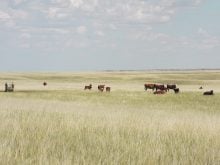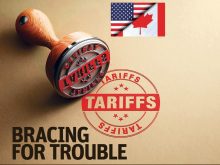Agriculture student Michelle Duckworth has determined the cost to keep a cow is likely a lot higher than what was being taught at school, thanks to the help from producers on Twitter.
Duckworth, an animal science technology student at Lakeland College, found keeping a cow costs around $1,000 per animal per year, nearly double than the $500-to-$600 figure that her professor told her class.
She said the cost estimate came from the Beef Cattle Research Council.
“My professor was telling us these numbers, and they were old and I knew they weren’t quite right,” said Duckworth, who grew up on a cattle ranch and feedlot near Courval, Sask., and is the livestock marketing manager for the purebred unit on Lakeland’s student-managed farm.
Read Also

Animal protection delivery to change in Saskatchewan
The Saskatchewan government is looking for a new agency to handle animal welfare after Animal Protection Services of Saskatchewan decided not to renew its contract next year.
“I was curious.”
So, Duckworth tweeted last fall, asking producers how much it costs to keep a cow per year and that all costs needed to be factored in.
She said her dad suspected the estimate provided in class was way too low. Others online felt the same.
“I got a ton of people responding, like 30 or so,” she said. “They all said it can cost around $1,000 per year per cow, though that can fluctuate depending on the year and other factors.”
Duckworth determined that the costs were much higher because not everything was being accounted for. Vet and feed costs are generally much higher, she said, and the numbers in school weren’t taking opportunity costs into account.
“Me and my professor talked about it,” she said. “We found there aren’t a lot of new studies that are similar to the old one.
“Maybe this could change what he is teaching.”
Regardless of the numbers, Duckworth’s question sparked lively discussion online.
As well, she said it helped her learn more.
“A lot of people didn’t think of some of those extra costs,” she said. “But you need to think about how much things cost you and you need to know your real numbers.”
For instance, she said people need to think about costs associated with winter feeding, summer grazing, vet fees, adding breeding stock, fuel and utilities.
“Cattle are very high input but low rate of return, but you can look at different ways to lower your costs,” she said.
“Depending on what you do in the winter, where you put out a lot of straw for bedding, you might be able to lower some of those costs. Look at what you are feeding. Some may not need as much grain, especially if you have got good hay.”















